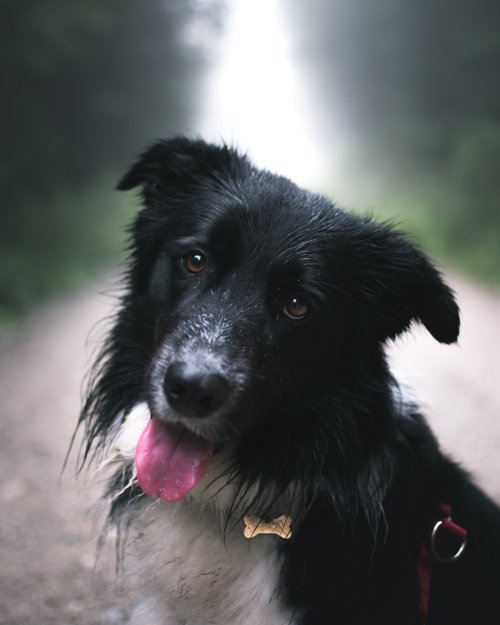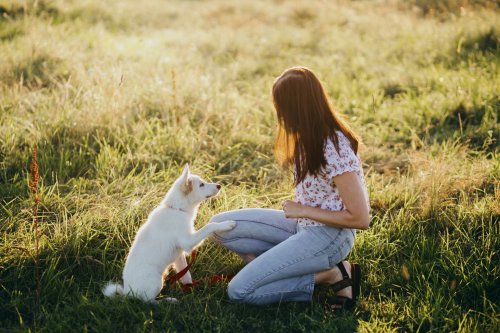Building a Strong Attachment Bond with Your Dog
There are four pet-parenting styles dog owners tend to practice, and each style influences the dog-human attachment bond differently. Parenting style predicts patterns of dog behaviour, and owners who spend more time with their dogs, trying to understand them and meet their needs, have higher chances of ending up with a balanced and happy dog.
What is an Attachment Bond with Your Dog?
As far back as 1958, an article studying the child-mother bond defined the word "attachment" as “a close, emotional connection between two individuals”. However, in the last few years, the research has expanded to observing the connection between different species that closely share everyday space. More and more scientists are interested in studying the attachment between humans and dogs and its influence on dog behaviour, which parallels human psychology research in many ways.
A group of scientists in a study on attachment and human-animal bond states that this connection has similar traits as the one between a human caregiver and an infant. And just as a healthy attachment in children can result in feelings of security and trust (or, in the absence of it, in feelings of anxiety and fear), it can also trigger similar conditions in our canine companions.

Why are Attachment Bonds Important?
The psychological and emotional benefits that dog-human attachment can bring are mutual. For dogs, people are more than a source of food and walking buddies: they are also social partners and, if the attachment is healthy, a source of emotional fulfilment. Dogs see humans as a social reference point as their owners can provide them security in an unfamiliar environment and serve as a reaction guide in distress situations.
The literature indicates that the abundance of emotional value coming from their humans, such as physical contact, affiliation, attention, and a sense of safety, most often results in a positive affective state in dogs. These attachment outcomes play a vital role in dogs' mental and emotional health. They show a clear link that when a dog feels safe and loved, behaviour problems are reduced or eliminated, thus making the training more effective.
But on the other side of the dog-human deep bond, the benefits are numerous, too—a conclusion well known to every dog owner, even without scientific research to prove it. Yet, many studies have shown that forming a strong bond with dogs (even short-term interaction) can significantly improve people's emotional and psychological states.

How to Create an Attachment Bond With my Dog?
Just as child development research indicates a strong link between parent personality and child behaviour—as well as the child's attachment style—the same has been observed in dog-human attachment bonds.
Moreover, a study conducted at Oregon State University and published in the Animal Cognition journal observed the dog-human attachment bonds in 48 dyads by conducting a pet parenting style survey on the owners. They compared the obtained results with existing dog behaviour to conclude how parenting style affects dogs.
Based on the collected data, dog owners were divided into three groups (three parenting styles), very similar to those used in human parenting research. These groups range from secure to less secure attachment style categories. They concluded that the owner's role is important in understanding how the dog performs in social and problem-solving contexts.
What is an Authoritative Style?
Dogs whose owners were classified in the study as authoritative had the highest chances of developing a secure attachment style. Their owners have set clear boundaries in which their pets can safely develop. At the same time, these owners consider their pets' emotional needs. In the survey, authoritative owners took the position that they strive to actively listen to their dogs and fulfil their physical and mental needs in equal measurement.
Dogs with authoritative owners were highly sensitive to social cues during the study. They tended to share their own space with the owner and were less interested in strangers present. At the same time, they were more independent in solving the puzzle that was part of the research and displayed a greater understanding of what was being asked of them. Furthermore, only dogs from this group successfully solved this puzzle task.
What is an Authoritarian Style?
In the literature related to humans, authoritarian parents showed high expectations of children but, at the same time, offered little support. These are also parents who are usually less consistent in punishment techniques, which makes them unpredictable as the boundaries they set are often unclear. Their relationship with children often lacks communication and openness.
Similarly, authoritarian dog owners in the survey showed a lack of consideration for the emotional well-being of their companion animals. Their pet-parenting style often consisted of force to gain compliance.
Authoritarian owners' dogs are more likely to be insecurely attached to their primary caregiver, especially when compared to the first group. These dogs spent more time seeking the proximity of their owner and were reluctant to communicate with strangers in a sociability test.
What is a Permissive Style?
In short, the permissive style is described as a no-boundary style. In humans, permissive parents are often taking a hands-off approach to parenting. Due to the lack of clear boundaries (or any boundaries at all), children of such parents are more inclined to violate social norms to get what they want. Some research suggests that permissive parents would often complete tasks independently rather than try to teach their children how to do them successfully.
In the study from Oregon County University, dogs whose owners were placed in the permissive style group showed signs of insecure attachment. However, the authors state that a larger sample is needed to confirm this claim. Several owners from this group indicated that their dogs suffer from separation anxiety, a particular behaviour that was not emphasised in the previous groups. In addition, dogs from this group proved to be less persistent in solving the puzzle, which provoked mental stimulation when they were left alone in a new environment with no people nearby.
What is a Neglective Style?
In addition, there is a fourth group of parenting styles—neglectful. Another term used to describe this style of parenting is uninvolved parenting. According to Karen Gill, M.D., and Valencia Higuera, the bottom line is that these parents don’t respond to the needs or desires of their children beyond the mare necessities such as food, clothing and shelter. These children receive little guidance and discipline and are often on their own when it comes to making decisions.
Just as uninvolved parenting can have a negative effect on a child, the same is true in the dog-human relationship. The lack of emotional connection and feelings of insecurity are visible in poor social skills and unpredictable behaviour in unfamiliar environments or situations.

First Step to a Secure Attachment Style: Know Your Dog
The best way to develop a deep connection with someone is to get to know them as well as possible. Therefore, devote time to your dog and observe its unique existence. Find out (and observe) how your dog's exceptional sense of smell works, what colours it sees, what games it enjoys or what food it prefers. Learn what triggers a burst of energy in your dog and ask yourself do you know the difference between a happy dog and an over-aroused one? Observe how your dog expresses emotions and what emotions you can recognise. Our article on Canine Emotional Regulation will help you with this.
The better you know your dog, the stronger and healthier the mutual attachment will be. Apart from the enjoyment, this bond can bring, it will also improve training sessions as the dog will be more willing to stay in the zone of learning.
Furthermore, knowing your dog will help you recognise subtle changes in your dog's communication that can lead to early detection of stress causes, such as detecting the cause of pain that dogs are very often reluctant to show.
Keeping Your Dog Feeling Safe and Confident
We are social beings, and secure connections with others are a source of inner strength for us humans. As a huge part of our human world, dogs proved to be just as social as we are, which is why a healthy attachment to their owner brings them peace and security.
Dogs with secure attachments to their people are far less likely to display problematic behaviour. More than that, security that arises from a strong connection with the owner and clear boundaries that the owner has set bring dogs self-confidence and trust. Our beloved pets learn through the reinforcement of their behaviours, which is why they need a safe environment when performing the tasks or behaviours we expect of them. For example, during training, their emotions and condition should be considered so that dogs feel that they are heard and that their attitude is respected.

Positive Reinforcement
For a long time, the positive reinforcement approach has been gaining popularity as one of the best training methods, whether working with a puppy or an adult dog. It can include food treats, petting, favourite toys or any other reward to teach new behaviours or as a reward when the dog shows responsiveness to the owner’s or handler’s instructions.
Coupling an authoritative approach with positive reinforcement ensures that the dogs clearly understand the task and are encouraged to perform without fear and with minimal stress. Building trust is at the forefront, demonstrating the value owners place in respecting their dog’s ability to display positive or negative emotions associated with their experience.
The research mentioned above from Oregon State University shows that pets whose owners have high expectations and belief in the ability of their dogs to meet them—while also having high responsivity to dog behaviour (authoritative style)—feel safer even when their owner is not with them. They are also more persistent in solving problems and, therefore, more successful in different tasks.
Conclusion: A Deep Loving Bond as a Reward
As with raising children, dogs need security and guidance to develop and function successfully in society. Dog owners who sincerely work on getting to know their pet and its patterns of being and needs, including emotional ones, are on track to building a great relationship. In such a secure environment, our dog feels free to learn and grow and is more successful in achieving the goals we put in front of it.
This honest and mutual attachment brings benefits to humans as well. They are so numerous and obvious that scientific research on the subject can only repeatedly confirm what is already well-known by millions of pet owners worldwide. If we treat our dogs with love and respect and maintain clear boundaries, they will repay us many times over.






Leave a comment